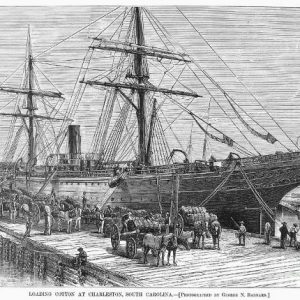

Gadsden’s Wharf
Gadsden’s Wharf is the last and most important disembarkation point for enslaved Africans in North America. Completed in 1772 by slave labor, the wharf was most active between 1783 and 1808 when an estimated 100,000 African men, women, and children arrived and were sold into slavery. The 840-foot wharf, at the time the largest in North America, could accommodate up to six ships at once. It stretched between today’s Calhoun and Laurens Streets and from the harbor to East Bay Street.
Today, the wharf is home to the International African American Museum, an expansive building built on pillars so as to not touch this “sacred ground.” The museum, which opened in late June 2023, chronicles history ranging from the centuries-old cultures of West and Central West Africa to African American success today. The museum displays 12 permanent exhibits in nine galleries and offers a Family Genealogy Center. The gardens and grounds also tell a story of resistance, resilience and triumph.